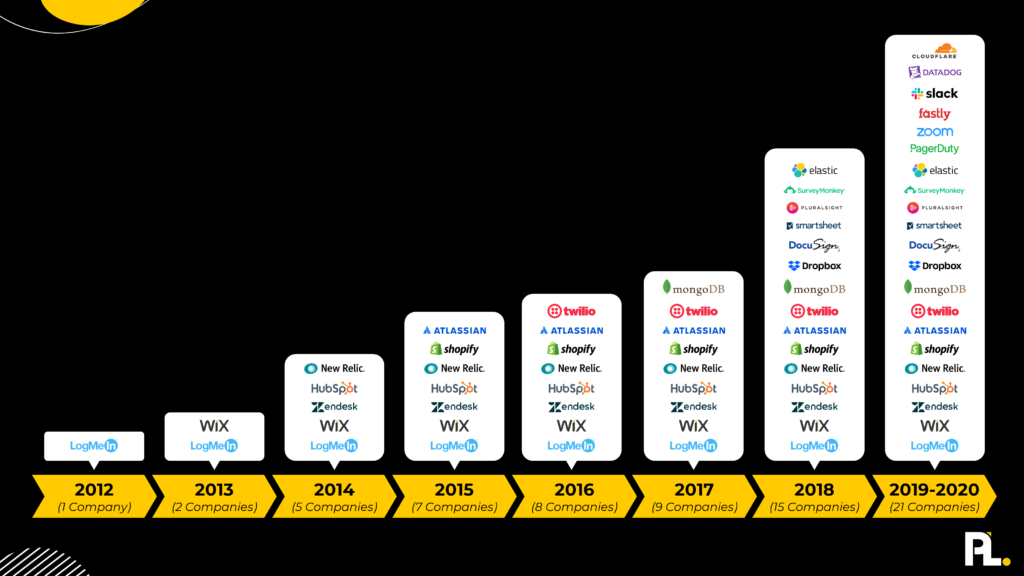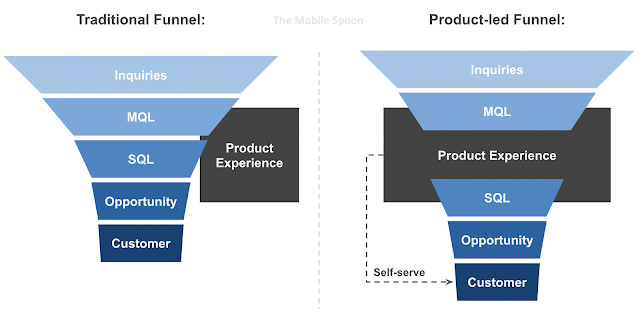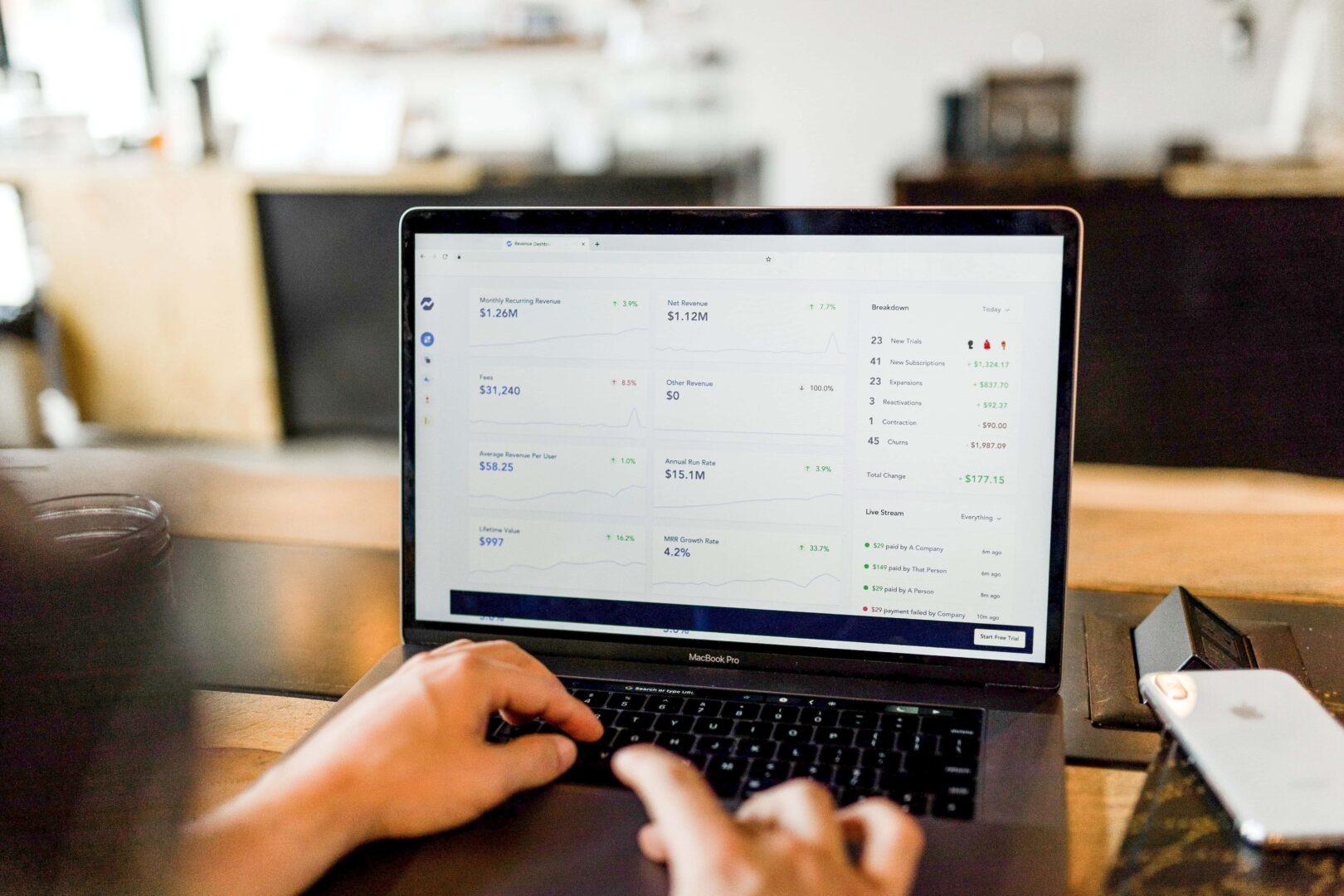Remaining competitive in the B2B sales industry relies on customer retention and overall satisfaction. Many companies are embracing the idea of product led growth (PLG) to help boost their numbers and increase brand loyalty.
It seems obvious you must have a good product, but the value of providing quality services continues to increase. PLG is more complex than simply having something worth buying. It relies on ensuring a user-friendly experience and excellent customer service to create lasting relationships.
Marketing is no longer the only way to push leads through the sales cycle. By combining a focus on the customer experience, sales and marketing can create a cohesive end goal. Not only does a product centric approach help align departmental goals, it allows the customer to have a voice throughout the sales cycle.
To learn more about the ways your team can benefit from PLG, keep reading, or use the following links to jump ahead:
- What is Product Led Growth (PLG)?
- PLG Trends in the B2B Industry
- The Benefits of a PLG Strategy
- Implementing PLG Into Your Business
- Key Takeaways
What is Product Led Growth (PLG)?
Like many trending B2B strategies, product led growth is not a new concept. It is, however, an important strategy to empower customers and retain sales. As PLG continues to increase in popularity, your team should better its understanding and implementation of the concept.
Simply put, PLG allows the product or service to drive sales and retain customers. This relies on several factors like ease of use and excellent product experience. Rather than expecting marketing to do the heavy lifting for brand awareness, this strategy incorporates product functionality directly into the sales process.
By putting the product at the center of all conversations, it can help align goals across departments and boost business growth. This also means employees will be working toward the single objective of excellent product experience for all customers.
Through this all-company collaboration, more people are introduced to the user experience, which drives conversations with customers from all angles. However, PLG isn’t solely based on your team’s understanding of the services your company sells.
Another key component of this strategy is allowing customers to see the product value before asking for a purchase. This means having a strong user experience that allows prospects to dive deep and trial the product on their own.
Rather than watching product demonstrations or Q&A webinars, customers should be able to test the functionality on their own. Through implementation of this strategy, success relies on overall customer satisfaction before a sale has been completed.
For example, free trials work hand-in-hand with product centric approaches. Allowing customers to test how the product can provide solutions to their unique problems helps provide valuable insight before purchase. It also allows prospects to address concerns and work out potential problems with a company expert.
PLG helps instill confidence in clients through transparency of service. By providing an inside look at user experience, your team can boost customer satisfaction and increase overall retention rates.
PLG Trends in the B2B Industry

It is not surprising that the B2B industry saw rapid digitization during the COVID-19 pandemic. Before this sudden shift to virtual sales, leaders in the industry were finding ways to innovate customer experience through increased use of technology. While the pandemic sped things up, trends like PLG are here to stay.
Buyers have the resources to be more educated than ever on products before making a purchase decision. This means remaining competitive in the industry relies heavily on customer experience throughout the entire sales cycle.
As brands continue to have an increased online presence, customers are able to interact with products before they even speak with a salesperson. In fact, research shows 94% of B2B buyers perform online research before initiating contact with a sales team.
Educated buyers are now interacting with demos and free trials as early as possible in the sales cycle. Rather than wanting to speak with salespeople for a product introduction, clients are eager to have a hands-on approach to testing solutions. According to a 2015 Forrester survey, almost 75% of buyers would rather make an online purchase than go through a sales team.
This has shifted initial sales conversations to focus more on product details and the technical capabilities of products. Customer preparation has led to an expectation of expert customer service throughout the sales process. In most cases, buyers want salespeople to act in tandem with the website so they can navigate the process alongside an expert.
The Benefits of a PLG Strategy

To understand how this strategy can benefit your business, it is important to make a comparison between traditional growth methods. Starting off, marketing teams usually qualify leads through online interactions like targeted ads, web forms, and email marketing. From there, leads enter the sales funnel and the salespeople reach out for an introduction.
Next, the sales department focuses on showcasing product benefits and providing details on how the product can provide needed solutions. If interested, the customer chooses to make a purchase.
Once the sale has been completed, the customer works with the success team for onboarding and implementation. Assuming things go well, the customer becomes a repeat buyer and the sales cycle restarts.
The traditional strategy allows for a long period of time before the customer is introduced to the product’s functionality. In a time where buyers are prone to making quick decisions and competitors can offer easy demos, following a traditional timeline may not land your company the sale.
In contrast, PLG allows the prospect to jump right into the product. Marketing and sales departments act as experts to help guide customers through the user experience. Rather than client information being captured from online traffic, this cycle starts as soon as the customer signs up for a trial.
Known as product-qualified leads (PQLs), these clients begin interacting with the product as soon as possible. Rather than waiting to be contacted by a salesperson, clients are most often familiar with the brand before the introduction occurs. Once a salesperson reaches out, the conversation can focus heavily on the client’s specific areas of interest, potential personalized features, and any other questions the customer may have about the product.
This kind of transparency is a huge benefit to companies. PQLs convert at a rate 3-4x higher than traditional marketing leads. When customers feel confident in a product before making the purchase, retention increases.
PLG is a great way to gather feedback from customers and improve overall product functionality. When the product is a driving force behind sales, customers are able to provide honest feedback to companies about their experiences.
When a sale is completed, your team is able to hear what was the deciding factor. On the flip side, offering your customers a free trial of your product, even if the sale falls through, helps provide insight into areas that need improvement.
This strategy is cost-effective. Customers begin the onboarding process by themselves, which frees up your employees to concentrate on providing excellent customer service. Less time and money are wasted on deals that don’t come to fruition.
Providing a better user experience increases customer retention and provides incentives for word-of-mouth advertisement. When clients are able to test out a product for free, they are able to share this information with others in their network who may be looking for similar solutions.
Since there are no hold-ups on anyone being able to trial the service, these leads come directly into the pipeline once they sign up. Along with increasing a user base, this helps speed up the sales cycle.
Gaining valuable customer contact information is easier when your product leads the marketing strategy. Usually, web traffic may visit a page or interact with an online ad, but their contact information might never reach your pipeline. Since users have to fill out a full form for free trial access, your marketing team is able to take PQLs directly to the sales team.
For example, when using Leadboxer to capture web traffic, your team can tell these customers are already qualified and scored since they began the demo. This pushes them to the top of the sales cycle, which allows for speedy outreach from your team. By encouraging a quick turnaround time, PLG helps outreach happen faster while leads are still interested in the product.
Implementing PLG Into Your Business
Before jumping into this strategy with your employees, it is crucial to understand PLG is a long-term approach rather than a short-term fix. Implementation will take time and resources to be successful. It may require departmental changes and an overhaul of the company mission to ensure a product-centric focus.
When implemented correctly, PLG will help lead your team to higher sales and increased customer retention. Below are tips on successfully getting started and utilizing a PLG strategy:
1. Evaluate your product
Having an intimate understanding of your product, including its flaws, is the first step in implementing a PLG strategy. Before it can sell itself, your company needs to thoroughly understand the value the product brings to the market.
Evaluation can begin with a few simple questions:
What is the core function? What solutions does your product provide to customers? What feedback is most often received?
Compare your product to the competition. Notice the similarities and differences.
Find the best way to engage prospective customers when speaking on these topics. Educated clients are willing to ask directly about these types of variances. Be prepared to answer honestly during these conversations.
For example, your product may lack certain features compared to that of a competitor. However, your starting price point may be lower. Understanding how to explain this to prospects will help build trust within the relationship.
2. Focus on the customer experience
When the customer is driving the sale through self-education, a user-friendly experience is crucial to finalizing a deal. Beginning with initial onboarding, signing up for the product should be self-explanatory and easily accessible. Prospects are eager to get started, so the sign-up process should be quick enough to hold a customer’s attention.
Sales conversations should bring value to the customer. Rather than relying on old-school tactics, your team needs to focus on acting as product experts to prospective clients.
Removing fluff from these interactions is one way to increase trust within the relationship. Make sure customers feel like they took away valuable information from each conversation with your salespeople.
Allow ample opportunities for clients to provide feedback. Not only will this help customers feel more valued, but it will give your team vital information regarding potential product improvements.
Customize features when possible. Buyers love the idea of personalization, especially when they’re looking for solutions to unique problems within their organization. 80% of customers favor the ability to customize their user experience.
3. Provide continuous onboarding
In the initial onboarding process, users will be signing themselves up for a trial. That doesn’t mean your team should take a backseat to onboarding, though. Instead, customer success teams should concentrate on secondary and next-tier opportunities to increase user engagement.
Customer retention increases when there is a strong need for your product. By encouraging clients to continuously use new features and engage with your software, your product will quickly integrate into their daily workflow.
This is another opportunity to allow conversations with customers about their user experience. As they add more features to their product usage, make sure your team is doing their due diligence.
Having check-ins about new features during the continuous onboarding process will help your team have internal conversations about product performance. This allows your team to collect data on what is working, as well as find areas that may benefit from improvements.
4. Align departmental goals within your company
Overhauling long-term business strategy can be a big undertaking. For success, departments must be on the same page about the company’s mission. When practicing a PLG strategy, marketing and sales teams will be trying out nontraditional tactics.
It is important to make sure the product is always central to the mission. Marketing teams should work closely with sales and customer success to understand the feedback being given. Adjust your marketing outreach to lead with the product.
These efforts from all departments should encourage excellent customer journeys and work to increase brand loyalty. Even though the product and customers are doing a lot of heavy lifting, it is still the goal of your team to provide value throughout the sales cycle.
5. Tailor your marketing practices to showcase the value
Since much of the beginning sales cycle in PLG strategy involves solitary customer research, messaging is key. Customers will want to see an overview of key features as well as pricing when comparing brands.
Make sure your pricing sheet is accessible and easy to understand. Marketing content should help explain how clients can benefit from the premium version of your product. Simple explanations of which plans work well for specific groups can encourage prospects to explore the features that are most relevant to their needs.
Online resources, like blogs or social media posts, should showcase the features your product offers. Many users will be looking at multiple options during their research. It is important to make your product stand out by providing valuable information about the user experience rather than fluff content.
6. Utilize upsells and premium features
Once a sale is made, the goal should be to encourage repeat purchases from that customer. This typically happens through contract renewals, but there is an opportunity to add more revenue through upsells and new features.
If a client is thoroughly enjoying the service your product provides, your team should brainstorm ways new features may bring additional value. Asking customers what they want to see in future rollouts is a great starting point.
Offer items in discounted bundles or find ways to include an option for premium features. These types of add-ons may be an easier sell once clients are familiar with your product. Ongoing outreach from the sales team to current customers is crucial for landing these upsells.
7. Encourage user referrals
PLG provides ample room for customers to refer your product to others in their network. If your trial period is easy to access, prospects can sign up and get started within the same day of hearing about your product.
Capitalize on your customer experience by offering a referral program that incentivizes current relationships to bring in new business. This type of program can help boost brand loyalty, as clients can continue to tell others about your product.
According to McKinsey, a recommendation from a trusted friend or colleague is 50x more likely to result in a purchase. This helps boost your overall return-on-investment (ROI) since referrals typically cost less than acquiring a brand-new lead.
User referrals can help boost overall customer satisfaction. Current clients will feel appreciated when their recommendations are rewarded by the brand.
8. Follow through on your advertisements
When customer experience is a major driving factor for sales, following through on promises is crucial. The classic saying ‘under promise, but over deliver is a good motto to have when implementing PLG.
Your product will be doing most of the selling, and it should be able to stand alone while customers are participating in a demo. However, if your salespeople make promises about product features or capabilities in conversations, it is important to see them through.
Transparency is huge when utilizing product led marketing. It will negatively impact customer retention if users don’t see sales agreements come to fruition.
This comes into play when customers are making the transition from the free trial to the premium version. If your team offers specific features or personalized capabilities, it is crucial to ensure these are available as soon as onboarding begins.
Clients have educated themselves on the benefits of your product versus your competitors. Since they’ll have spent time with your services, they will notice any lack of follow-through on promises.
PLG relies heavily on customer retention, and the easiest way to lose a relationship is by not providing the right service. Make sure to have honest conversations about the features your product has, and address any concerns as soon as they arise.
9. Use data to drive product choices
PLG strategy relies heavily on accurate data to understand the customer’s needs. Data analytics will help your company ascertain what value users are receiving from your product. This information can also help develop product improvements as your team rolls out new features.
When implementing a PLG strategy, it is important for your company to equip itself with the right tools and resources for success. Make sure you have a way to track data and pilot the user experience.
Along with using these kinds of tools, manage expectations among departments by setting KPIs and reviewing targeted goals. This allows your employees to easily measure success throughout the process.
Key Takeaways
Product led growth may be the newest trendy buzzword in the B2B industry, but the strategy is here to stay. In order to remain competitive, your company should be looking at the long-term benefits of a product-centric approach.
As customers continue to push for more virtual sales options, your product will need to be able to sell itself during the trial phase. Focus on having your salespeople become experts on product features. Tailor your marketing to showcase features that set your product apart from competitors.
Understand the best way to implement PLG into your organization. Invest in the right resources to ensure this strategy increases your customer base and retention.
Allow user experience and customer feedback to drive initiatives within your departments. Build lasting customer relationships through transparency. By focusing on the customer experience and product value, your company can benefit from this strategy.
To get started with Leadboxer, click here for your free trial!
